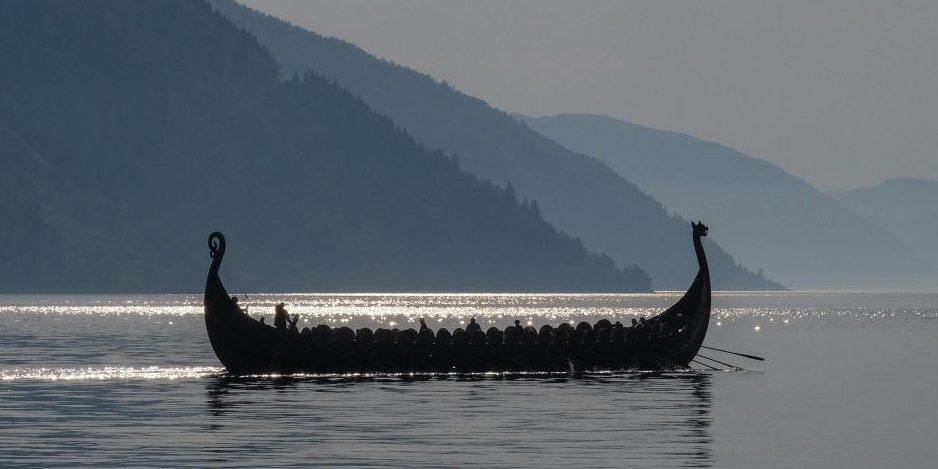Time Travel: the explorations of Leif Erikson
The story of Christopher Columbus, landing in what is now known as the Bahamas on 12 October 1492, is legendary. He is widely considered to be the first European to land in the Americas. However, recent research has suggested that his central claim to fame may not actually be correct. According to one school of thought, he may have been preceded on his quest to the “New World” by four centuries.
Even if we frame the story as the first European to reach North America, which is classically believed to be John Cabot’s arrival in Newfoundland in 1497, there is still a rival. Although, there is some doubt about where exactly he landed, the Icelandic explorer Leif Erikson has a strong claim to Columbus’ crown.
Leif Erikson was a Viking, believed to have been born in Iceland around 970. Leif was a descendent of travellers; his grandfather had been exiled from Norway, while his father, Erik the Red, was exiled from Iceland shortly after Leif’s birth. Eventually, the family finally settled in Greenland.
In 999, Leif Erikson embarked on his own travels, and his crew set sail from Greenland with the purpose of visiting Norway. However, they ended up spending the summer in Hebrides due to being blown off course where he became a member of King Olaf’s official entourage. He converted to Christianity and was tasked with introducing the religion to Greenland. Erikson set to work when he returned home but was sidetracked when he heard the story of an explorer named, Bjarni Herjolfsson. Bjarni, after being blown off course, caught sight of a green, hospitable-looking land to the west.
In 999, Leif Erikson embarked on his own travels
According to the myth, Herjolfsson was eager to return home, and therefore refused to investigate further. However, Erikson was intrigued by the discovery. He assembled a crew of 35 men and set out to discover this promising land. Their first encounter was with a land of ice and stone, which they called Helluland – Land of the Flat Stones – now widely believed to be Baffin Island. Finding little of interest there, they continued their expedition. Their next stop was a forested land with white shores, which they named Markland, meaning Wood Land. This location is thought to be somewhere on the Labrador coast of modern-day Canada, but again, it did not fit the description they were seeking.
A few days later, they achieved success when they discovered a place that aligned with the story. They established a camp and explored the land, finding vast forests suitable for timber, wild wheat growing abundantly, and enormous vines of grapes. Erikson named this area Vinland (Vine Land), and he and his crew remained there until spring. Subsequently, they set sail back to Greenland, carrying with them timber, wheat, and grapes for their people at home. On the way back, legend has it that they rescued two sailors who were caught in a shipwreck.
Legend has it that they rescued two sailors who were caught in a shipwreck
Of course, due to the time gap, there is considerable amount of uncertainty surrounding Erikson’s arrival in North America and the exact location of his landing. The location of Vinland is debated and have been linked to various spots along the northern Atlantic coast. In the early 1960s, excavations at L’Anse aux Meadows, located on the northernmost tip of Newfoundland yielded evidence believed to be associated with an 11th-century Viking exploration. However, others believe that the region is too far north to correspond to the Vinland described in the Icelandic sagas. As a result, it is not guaranteed that Lief did indeed land in North America at all. After his time in Vinland, Erikson returned to Greenland and never set foot on North American shores again. While his father remained unreceptive to the Christian faith, Leif was able to convert his mother. She was instrumental in having Greenland’s first Christian church built at Brattahild. Upon Erik the Red’s death, Leif Erikson took over as chief of the Greenland settlement. The story of Leif’s descendants remains unknown.
Starting in the late 19th century, many Nordic Americans started celebrating Leif Erikson as the first European to land in the New World. In 1925, President Calvin Coolidge announced to a crowd that this was his view. Then, in September 1964, Congress authorised President Lyndon B. Johnson to declare 9 October as Leif Erikson Day, a date chosen because it marked the arrival of the first Norwegian immigrants in the United States in 1825. Regardless of whether Erikson was the first European to reach North America, it is certainly true that Norwegians have a strong claim to being among the first Europeans to have visited the continent.

Comments